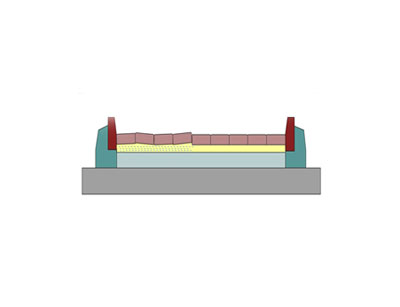Paving Installation Method


1. The installation process of pavers differs according to the different purposes of the surface. The following are the most effective installation techniques according to the purpose of the base-
- a. If the pavers are being installed at home/for regular use, the land base must be levelled with a layer of powder mix greet which is 1 to 2 inches thick.
- b. For apartment buildings or locations with light traffic, it is advisable that the base land be levelled with a roller, followed by levelling with greet and finally pavers should be installed.
- c. For roads, parking lots, petrol pumps and other high traffic areas, PCC soling is a must before applying greet.
2. It is important to maintain a proper slope while installing pavers. For this, a level tube or line rope can be used to ensure there are no sunken areas in between. These sunken areas trap water, which promotes fungal growth in between the pavers.
3. Using level tube/line rope is crucial while fitting in paver designs. If the installation has brick designs, the fitting must be checked with a line rope after the pavers are laid.
4. Rubber moulds must be handled with extreme care while unloading. Avoid accidental striking with hard surfaces or each other. While storing pavers, place them with coloured sides facing each other.
5. Use curb-stones to cover the edges of the area to be fitted with pavers. If that is not possible, lock the last line of pavers on each side with concrete. Without proper locking, the sand below the pavers would erode due to water which may cause the paver base to get disturbed.
6. Although it is unlikely, the paver surface may sink in during rains due to heavy traffic. In this case, remove only the sunken pavers, repair the base and fit them back like before. Fill the gaps (if any) properly with sand.
